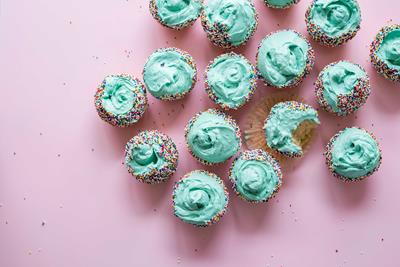
Tuesday May 19, 2020
By Paul Barach
 Education
Education
Say you find yourself stuck inside your home for an extended period of time. Who knows why? Maybe you’ve found yourself unemployed unexpectedly after your employer had to close up shop. Maybe your local government has asked you not leave your home unless absolutely necessary because of a pandemic spreading across your country.
Whatever the reason, you’ve found yourself with a lot of time on your hands and a lack of ways to fill it. There’s always streaming services, but sometimes you get the urge to do something a little more hands on. For example, baking. And since you have a bunch of hours to fill afterwards, why not make some edibles? After all, there’s few better ways to let the time pass indoors than with some delicious pastries that have a little extra kick. A nice brownie or a cookie both hits the spot as well as keeps you happy and hopefully sane.
Making Edibles at Home and Dealing with Smell
Since everyone else is stuck inside too (hypothetically), you do need to be a little more aware of everyone’s personal space while you’re baking. That includes their nostrils. Making cannabis butter or oil requires a lot of ground up bud simmering on low heat for a couple hours. All that plant matter, cannabinoids, flavonoids, and terpenes heating up can fill the air with some real potent aromas. If everyone’s cool with that, go ahead and knock yourself out. Just be prepared to share your baked goods afterwards. If they’re not, well, you’ve got a bit of an issue.

Of course, there are ways to lessen the overpowering smell of decarboxylating cannabis. You can use less weed in the mixture to shrink that cloud of roasting terpenes. You can open some windows and aim some fans out of them to keep the fresh air flowing. You can light up a stick of incense or plug in an air freshener to cover or confuse the smell. You could also cook up something even more overpowering at the same time, like curry.
However, if anyone in your place or in close proximity doesn’t like that rich aroma of cannabis hanging around for half a day, you might want to look into some other options. One of those options is to skip over the whole decarboxylating process altogether by using THC distillate.
Do Distillate Edibles Smell Like Cannabutter or Infused Oil?
As you may already be aware, distillate is that viscous, translucent oil that’s been purified of all cannabis plant matter through a process of distillation (hence the name). Whether the distiller is using butane, alcohol, carbon dioxide, or water, the end result is a liquid oil or crystalized solid of almost pure cannabinoid product such as THC or CBD. The distiller may add the terpenes and flavonoids extracted earlier in the process back in later to create a full spectrum distillate.
Using pure THC distillate in your edibles has plenty of benefits, but we’ll start with the main one: without the terpenes and flavonoids, you’re looking at a far more reduced aroma than cooking with cannabis butter or oil.
Any unsuspecting bystanders will lift their noses at the smell of...something, but distillate doesn’t quite have those same odors that basically hoist an olfactory banner emblazoned with “MARIJUANA.” Also, using a pure THC distillate means never having to deal with that underlying hashy taste of cannabutter again.
Plus, with distillate you have a much easier time dosing. A professional cannabis chemist has already done the work for you, both distilling the cannabis as well as measuring out the THC percentage in the final product. Thanks to all that information slapped on the label, you’ll know just how potent those brownies are rather than having to play everyone’s favorite game “How stoned am I about to get?” Think about it this way. Your distillate package should tell you that it contains around 900-1000 milligrams of THC. Adding the entire package to your cooking oil tells you exactly how much the entire batch contains. Then you can divide the portions with relative ease.
Making Edibles with Distillate
Cooking with distillate is also way easier than making cannabutter. All you need to do is follow a couple of simple steps.
Infusing Butter or Oil with Distillate:
- Place your distillate container (jar or syringe) into a hot water bath. This will loosen the product up.
- Measure out how much butter or oil you’ll need.
- Pour your distillate into your oil.
- Stir everything together, then keep stirring to make sure you get even distribution.
- Heat your mixture in the microwave on medium for about two minutes so everything melts together. Don’t heat it up too much or you’ll start to damage the cannabinoids
- Pour your oil mixture into the batter and get your bake on! Just remember to keep the oven temperature at or below 325 degrees Fahrenheit so the cannabinoids aren’t denatured.
Cooking with distillate can even give you more options than with cannabutter, since distillate is already activated. In other words, you can just eat it without having to cook it at all. Because of this, you can get fancy. Whip up the distillate into some frosting and spread it on top of a cake. Or inject it into your cookies as they’re cooling to really get some control over the dosage.
If you find yourself stuck inside with a hankering to bake, but are surrounded by people who aren’t down with the smell of weed, distillate is the best choice for keeping you and everyone around you happy until you can all go outside again.
Have you ever made edibles with cannabis distillate? Share your stories and experiences in the comments below.
Photo Credit: Brooke Lark (license)







